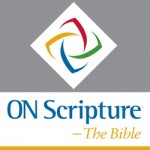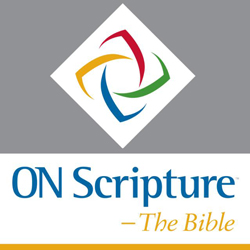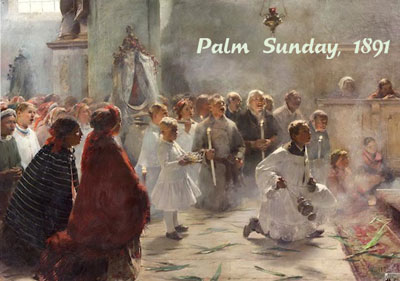We are a small Episcopal Church in the village of Port Royal, Va., united in our love for God, for one another and our neighbor.

Easter 5 – “Just as the branch cannot bear fruit by itself unless it abides in the vine, neither can you unless you abide in me. I am the vine, you are the branches.”
May 2 – 11:00am, Holy Eucharist,
In person in the church or on Zoom. – Join here at 10:45am for gathering – service starts at 11am Meeting ID: 869 9926 3545 Passcode: 889278
May 2 – 7:00pm, Compline on Zoom – Join here at 6:30am for gathering – service starts at 7pm Meeting ID: 878 7167 9302 Passcode: 729195
May 3 – 6:30am – Be Still Meditation group in a 20 minute time of prayer Meeting ID: 879 8071 6417 Passcode: 790929
May 5 – 10:00am – Ecumenical Bible Study through Zoom
May 9 – 11:00am, Sixth Sunday in Easter, Holy Eucharist
May 9 – 7:00pm, Compline on Zoom – Join here at 6:30am for gathering – service starts at 7pm Meeting ID 834 7356 6532 Password 748475
Follow Tucker in the World!

Follow Tucker’s travels through his Instagram site, main_adventure_life. The link is here
Projects in May
3 projects for you to support – one local in the Caroline County, one in the Episcopal Church and finally one which is international but which ties back to local roots. Most end in May thought one on Jamaica extends through much of June. Support one or more or all!
1. Help the Caroline Detention Facility – May 2 – May 23

Chaplain Shoars has asked for donations of notebook paper, Forever stamps and envelopes for his people, who would like to be in touch with their families. Please bring your donations to church and place them in the box in the back pew. The collection will end on Sunday, May 23rd
2. UTO Ingathering – May 16 – May 30. More on the UTO
Boxes will be handed out on May 16 and collected on May 30. Write a check to “St. Peter’s- UTO” to help with the work of this vital ministry.

3. Jamaica Project – May 2 – June 20

This project will provide needed school supplies to the 330 children of the Victoria School, Andrea’s elementary school in Jamaica. As Andrea has said, “Being able to make a positive difference for an institution that has made a positive difference in your life is deeply rewarding and meaningful.” The supplies will be shipped to Jamaica at the end of June in order to arrive before the school year begins.
Three ways you can help:
1. Pray for the success of this project.
2. Contribute money for this project by writing a check to St Peter’s, with Jamaica Project in the memo line.
3. Donate some of the needed items by checking out this Amazon website which contains a complete list of supplies needed for the school children.
You can order directly from this list, have the items you have chosen shipped to you, and then just bring your donation to church or give it directly to Andrea.
You ship the items directly to 602 Main St, Box 385, Port Royal, VA 22535, which will get your donation to Andrea’s Post Office Box.

Four Sundays of May commemorating agriculture, the Ascension, Pentecost and Trinity Sunday – are four feasts of great importance in the life of the Church. They are distinctively “named” Sundays.
Rogation Sunday on May 9 (Easter 6) goes back to prayer and fasting in early Christian times for protection for crops from disease. It was also a reflection of the Roman holiday of Robigalia at which a dog was sacrificed to propitiate Robigus, the god of agricultural disease. In England they were associated with the blessing of the fields at planting. The vicar “beat the bounds” of the parish, processing around the fields reciting psalms and the litany. In Christian years it involved fasting and abstinence in preparation for celebrating the Ascension. Traditionally, Rogation days are the three days before Ascension Day on which the litany is sung (or recited) in procession as an act of intercession.
The Ascension (May 13, celebrated May 16) is usually described as marking the completion of Jesus’ ministry on earth as he returned to Heaven. But it is far more than that. It marks the exact moment when Jesus, Son of God, commissioned his disciples to begin the gigantic task of converting the whole world. As recorded in St Mark’s Gospel, Jesus said: “Go into all the world and proclaim the good news to the whole creation. The one who believes and is baptized will be saved; but the one who does not believe will be condemned.”
Luke tells us that Pentecost (May 23) occurred a short time after the Ascension, and marked the fulfillment of Jesus’ promise, at his Ascension, to send the Holy Spirit on the disciples.
The gift of the Holy Spirit electrified these fearful followers – who only weeks before had run away when Jesus was arrested, and were still hiding for fear of those who had been responsible for their Lord’s death – and transformed them into men and women willing to lay down their lives for their faith, as many of them did.
The feast of Holy Trinity (celebrated May 30), though logically linked with the other two, was established much later. Although its existence was clearly stated in the New Testament, and early recognized as a doctrine of the faith, it was only when the Arian heresy – which denied Jesus was God – was spreading in the fourth century, that the church Fathers prepared an Office with canticles, responses, a preface, and hymns, to be recited at Mass. From these, the feast we now celebrate as Trinity Sunday gradually evolved.
Together, these latter three great feasts mark the promise which Jesus gave to his disciples, and its fulfilment in the Church on earth. As recorded by Matthew, the very last words Jesus said to his Apostles before going up to Heaven, were: “Go therefore and make disciples of all nations, baptizing them in the name of the Father and of the Son and of the Holy Spirit, and teaching them to obey everything that I have commanded you. And remember, I am with you always, to the end of time.”
Rogation Sunday, May 9, 2021

Rogation Sunday, a time of celebration and prayer, is a time set aside to appreciate and recognize our dependence upon the land for our food and most importantly upon our dependence of God for the miracles of sprouting seeds, growing plants, and maturing harvest.
The Rogation Days, the Monday, Tuesday, and Wednesday before Ascension Day, originated in Vienne, Francein 470 after a series of natural disasters had caused much suffering among the people. Originally, the Christian observance of Rogation was taken over from Graeco-Roman religion, where an annual procession invoked divine favour to protect crops against mildew. Archbishop Mamertus proclaimed a fast and ordered that special litanies and prayers be said as the population processed around their fields, asking God’s protection and blessing on the crops that were just beginning to sprout.
The Latin word rogare means "to ask", thus these were "rogation" processions. The tradition grew of using processional litanies, often around the parish boundaries, for the blessing of the land. These processions concluded with a mass. The Rogation procession was suppressed at the Reformation, but it was restored in 1559. The poet George Herbert interpreted the procession as a means of asking for God’s blessing on the land, of preserving boundaries, of encouraging fellowship between neighbours with the reconciling of differences, and of charitable giving to the poor. The tradition of ‘beating the bounds’ has been preserved in some communities. In the latter a group of old and young members of the community would walk the boundaries of the parish, usually led by the parish priest and church officials, to share the knowledge of where they lay, and to pray for protection and blessings for the lands. Others maintain the traditional use of the Litany within worship. In more recent times, the scope of Rogation has been widened to include petition for the world of work and for accountable stewardship, and prayer for local communities, whether rural or urban.
The Sunday before the Rogation Days came to be considered a part of Rogationtide (or "Rogantide") and was known as Rogation Sunday. The Gospel formerly appointed for that day was from John 16, where Jesus tells his disciples to ask, and ye shall receive.
Lectionary, May 9, Easter 6
I.Theme – A Community characterized by love

"The Endless Road" – Margret Hofheinz-Doring (1971)
The lectionary readings are here or individually:
First Reading – Acts 10:44-48
Psalm – Psalm 98 Page 727, BCP
Epistle –1 John 5:1-6
Gospel – John 15:9-17
Today’s readings urge believers to come together in a community characterized by love. In his sermon, Peter tells Cornelius of God’s work in Jesus Christ, thus opening the doors of the Church to Gentiles. The author of 1 John describes Jesus as God’s love for us, and calls us to embrace one another in that love. In the gospel, Jesus tells his disciples that they have been chosen to love one another; in this they will find perfect joy.
The great commandment, love God and your neighbor, transforms everything we do. While we cannot describe the specifics of love, because love is always highly situational and concrete, a commitment to loving actions and attitudes is at the heart of our relationship with God and all creation. Love embeds us in the fabric of relatedness, opening us to the creative energy of the universe and enabling us to become channels to others of the divine energy we have received.
Acts 10:44-48 This missionary speech in today’s reading marks an important turning point in the outreach of the early Church. Many Jewish Christians feared and resisted the possible inclusion of Gentiles, but Luke makes clear that Peter himself (even before Paul) began the mission to the Gentiles under the direction of the Holy Spirit.
Cornelius was a “God-fearing” Roman, one who worshiped God but had not adopted all of the Jewish religious practices. Cornelius receives the sacrament of baptism, but not before he and his gathered household receive the gift of the Holy Spirit. This event marks a new Pentecost. The circle of Christian faith has now broadened to include the inhabitants of “the ends of the earth” (1:8). The Spirit first came to Jews (2:1-4), then to the despised Samaritans (8:14-17), and now to the Gentiles.
Psalm 98 This psalm is closely related to Psalm 96. Its original setting may have been the enthronement festival of Yahweh, celebrated each year at the New Year’s feast of Tabernacles. In later times the psalm was interpreted to herald the lord’s final coming. It presents the lord, in faithfulness to the covenant, acting in history for the salvation of God’s people.
1 John 5:1-6 The writing of 1 John seems to have been occasioned by a schism in the community due to heresy, specifically the denial of Jesus’ humanity. The central theme of 1 John is that “God is love” (4:8). The significance of this statement is explored through repeated meditation that interweaves theology and ethics. Those who make the early baptismal confession, “Jesus is the Christ,” have assented to a pattern for their behavior. As God’s children, Christians are to love God and one another and to obey the commandments. Through trust in Jesus, the Christian may overcome the world.
John 15:9-17 Believers are to love one another with a love characterized by self-sacrifice. Thus while Christians are still "servants" (v. 15, literally “slaves”) of Christ in terms of ministry (see 12:26; 13:14-16), they are "friends" (v. 15) of Christ in terms of intimacy with God. In and through this relationship Christians are appointed to "bear fruit" (v. 16).

Make a Gift Today! 2. Contact the Rev Catherine Hicks, Rector 4. Server Schedule May, 2021 5. Latest Newsletter-the Parish Post (May, 2021) 6. Calendar 9. Latest Sunday Bulletin (May 2, 2021 11:00am), and Sermon (May 2, 2021) 10. Recent Services: Readings and Prayers, Easter 2, Sunday, April 11 Readings and Prayers, Easter 3, Sunday, April 18 |

Block Print by Mike Newman
Projects

3-Minute Retreats invite you to take a short prayer break right at your computer. Spend some quiet time reflecting on a Scripture passage.
Knowing that not everyone prays at the same pace, you have control over the pace of the retreat. After each screen, a Continue button will appear. Click it when you are ready to move on. If you are new to online prayer, the basic timing of the screens will guide you through the experience.

Daily meditations in words and music.

Your daily prayer online, since 1999
“We invite you to make a ‘Sacred Space’ in your day, praying here and now, as you visit our website, with the help of scripture chosen every day and on-screen guidance.”

Saints of the Week, May 2, 2021 – May 9, 2021
|
2
|
Athanasius, Bishop of Alexandria, 373 |
|
3
|
[Elisabeth Cruciger], Poet & Hymnographer, 1535 |
|
4
|
Monica, Mother of Augustine of Hippo, 387 |
|
5
|
[Martyrs of the Reformation Era] |
|
6
|
|
|
7
|
|
|
8
|
Julian of Norwich, Mystic & Theologian, c. 1417 |
|
9
|
Gregory of Nazianzus, Bishop of Constantinople, 389 |

















 After the administration of corrective shock treatment to the dissenters, McMurphy begins to persuade the others to leave the institution, a premise they resist due to a lack of faith in their own capabilities to function on the outside. In the concluding sequence, it is obvious that McMurphy has empowered at least one of his disciples to do what was once unthinkable. "Chief" hurls a limestone bathroom fixture through the window and escapes the hospital. The rush of water at the beginning of the scene can be linked to baptism.
After the administration of corrective shock treatment to the dissenters, McMurphy begins to persuade the others to leave the institution, a premise they resist due to a lack of faith in their own capabilities to function on the outside. In the concluding sequence, it is obvious that McMurphy has empowered at least one of his disciples to do what was once unthinkable. "Chief" hurls a limestone bathroom fixture through the window and escapes the hospital. The rush of water at the beginning of the scene can be linked to baptism. 










































 " />
" />















